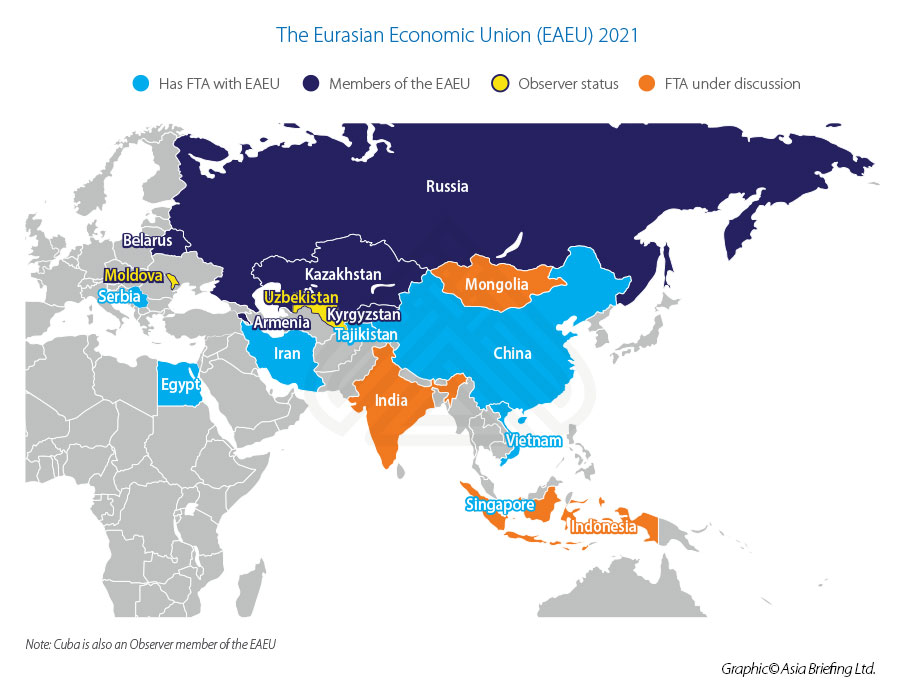A US$200 Billion China Russia Trade Deal On The Cards?
Op/Ed by Chris Devonshire-Ellis
With Sergey Lavrov, Russia’s Foreign Minister meeting his Chinese counterpart Wang Yi this week, there has been much talk of ‘increased cooperation’ and joint efforts at pushing back against perceived United States global trade bullying.
While global media has highighted the China-Russia cooperation angle, and a mutual desire to restrict the use of the US dollar in bilateral trade, nothing has yet surfaced about the future of the China-Eurasian Economic Union Free Trade Agreement. That was actually signed off in 2018, yet remains preferential, meaning no tariff reductions have yet been agreed to make the FTA meaningful.
The Eurasian Economic Union (EAEU) consists of Armenia, Belarus, Kazakhstan, Krygyzstan and Russia, and sits in the geographic region from the northern and north-west borders of China to the eastern borders of the European Union. The EAEU currently has free trade agreements with Serbia, Iran, Singapore and Vietnam and has numerous other FTA in the pipeline, including with several ASEAN nations and countries such as Egypt and Turkey.

China-Russia trade hit US$110 billion in 2020, with both sides aiming to double this by 2024. While much of this trade has been in energy and other commodities, the non-energy portion of bilateral trade has been growing into other sectors and currently consists of 30% of the bilateral flows. Keeping that momentum going and bringing new business sectors into the mix would boost both Chinese and Russian economies, badly affected both by the actions of the United States (trade war, sanctions) and Covid-19.
A China-EAEU FTA would be a start in shrugging off those negative elements and lead to a significant growth in China-Russia and China-Central Asian trade, with implications too for the European Union – Chinese goods can turn up on the EU’s doorstep duty free, and if permitted into EU markets would prove financially competitive for EU consumers. The EU won’t necessarily see it that way with protectionism in for example auto markets a key factor. But with deterioating relations all round, both China and Russia may decide enough is enough and pull the China-EAEU Free Trade trigger. It is a certainty that Lavrov and Wang discussed this. If the FTA can be concluded and tariffs agreed, the trade impact on both China and Russia, along with pressure on the EU, will be substantial.
Related Reading
- Russia-China Amur River Bridge To Open To Traffic In August: Cross-Border Industrial Parks Being Built
- China and Russia’s Joint Venture Belt and Road to the Moon
- AliExpress Russia Cuts China-Russian Delivery Times By 50%
About Us
Silk Road Briefing is written by Dezan Shira & Associates. The firm has 28 offices throughout Asia, and assists foreign investors into the region. For strategic advisory and business intelligence issues please contact the firm at silkroad@dezshira.com or visit www.dezshira.com





